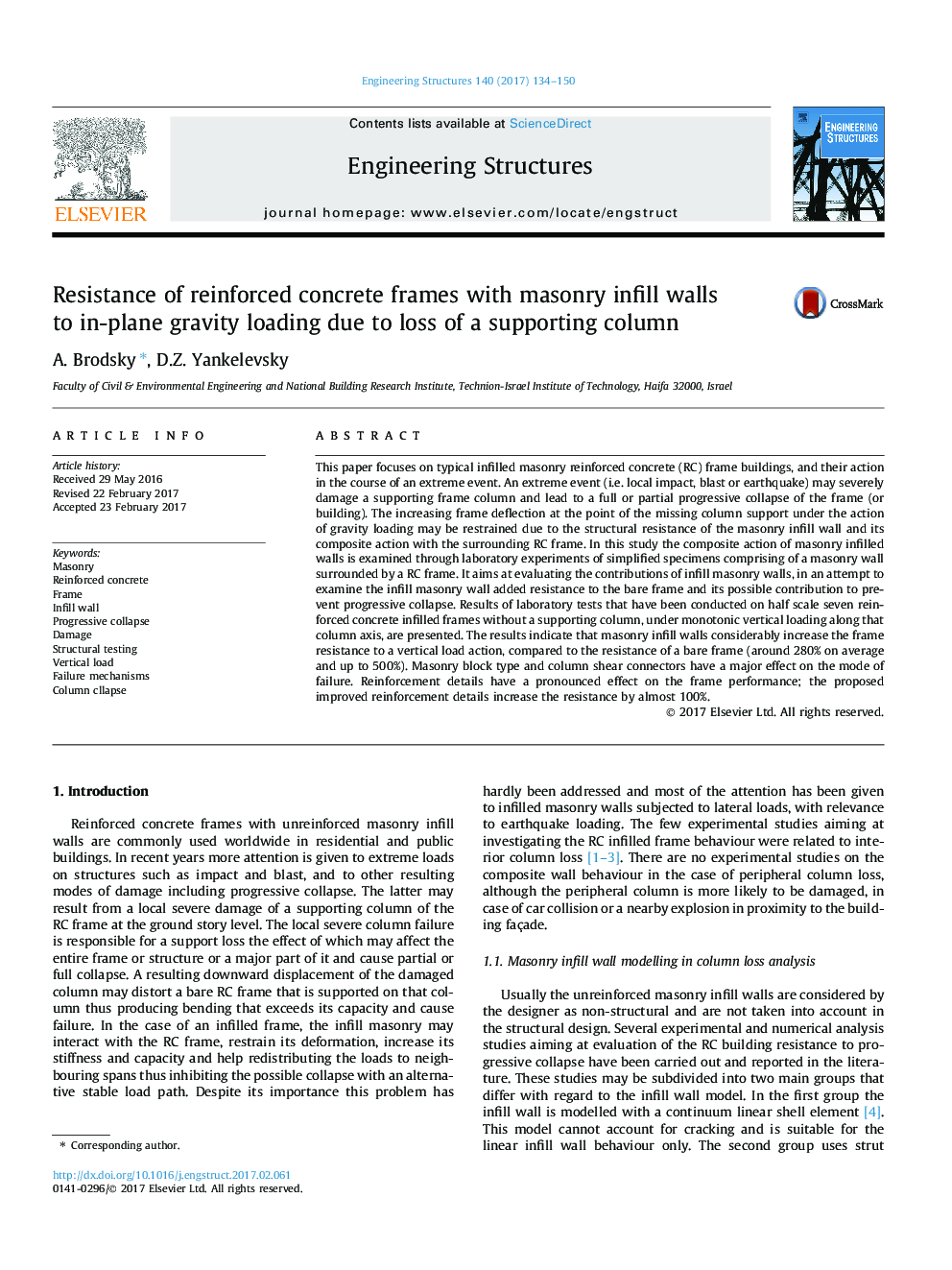| Article ID | Journal | Published Year | Pages | File Type |
|---|---|---|---|---|
| 4920199 | Engineering Structures | 2017 | 17 Pages |
Abstract
This paper focuses on typical infilled masonry reinforced concrete (RC) frame buildings, and their action in the course of an extreme event. An extreme event (i.e. local impact, blast or earthquake) may severely damage a supporting frame column and lead to a full or partial progressive collapse of the frame (or building). The increasing frame deflection at the point of the missing column support under the action of gravity loading may be restrained due to the structural resistance of the masonry infill wall and its composite action with the surrounding RC frame. In this study the composite action of masonry infilled walls is examined through laboratory experiments of simplified specimens comprising of a masonry wall surrounded by a RC frame. It aims at evaluating the contributions of infill masonry walls, in an attempt to examine the infill masonry wall added resistance to the bare frame and its possible contribution to prevent progressive collapse. Results of laboratory tests that have been conducted on half scale seven reinforced concrete infilled frames without a supporting column, under monotonic vertical loading along that column axis, are presented. The results indicate that masonry infill walls considerably increase the frame resistance to a vertical load action, compared to the resistance of a bare frame (around 280% on average and up to 500%). Masonry block type and column shear connectors have a major effect on the mode of failure. Reinforcement details have a pronounced effect on the frame performance; the proposed improved reinforcement details increase the resistance by almost 100%.
Keywords
Related Topics
Physical Sciences and Engineering
Earth and Planetary Sciences
Geotechnical Engineering and Engineering Geology
Authors
A. Brodsky, D.Z. Yankelevsky,
